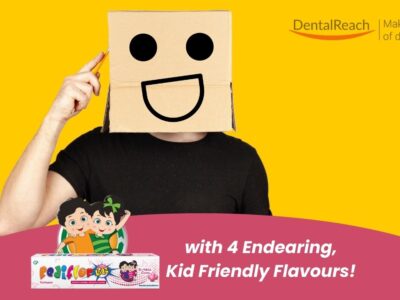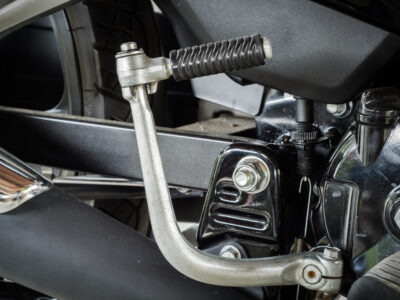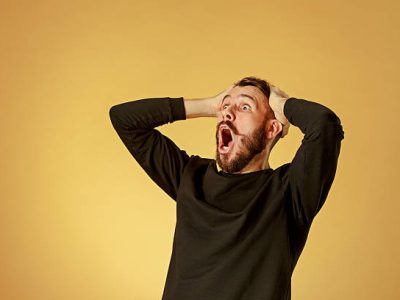– Team DentalReach
Abstract
A real team of dentists is the selling point of the clinic. Changes in the modern market of dental services strongly dictate the renewal of the principles involving different specialists, as well as the introduction of new methods of teaching them collegial work. Those who do not understand this, risk losing competitiveness and stagnating at the same level of service quality.
Firstly, do we need a team of dentists?
In terms of team style, modern practical dentistry should reach the level of medical healthcare services. This is due to several clearly expressed circumstances:
- Firstly, new technological possibilities have appeared for the treatment of complex clinical cases, which requires the participation of dentists of various narrow specialties.
- Secondly, advanced doctors of different profiles have began to unite their efforts in case of combined disorders in the oral cavity, showing an increased level of professional responsibility.
- Third, a significant factor in achieving the economic indicators of clinics has become consultation and treatment with the participation of dentists of various profiles, who are able to fulfill collegial recommended plans.
- Fourthly, more and more patients prefer to be treated in clinics, whose specialists work in a single legal field, demonstrating responsibility before the laws, observing the standards of consultation and follow-up treatment.
- Fifth, the number of patients – who are interested in eliminating all oral disorders and to pay highly qualified teams of specialists for the same- have increased.
Providing a range of services to patients, with the participation of a team of specialists is a raging problem in private dentistry. The demand for a team approach to treatment is proved by the following facts:
1. Forums, conferences and training programs, which combines the efforts of dentists of different profiles are increasingly being announced.
For example, the training offered for occlusion disorders concerns a holistic approach that includes “restorative, periodontal, implant and orthodontic strategies as key success factors”. Or to solve the problems of periodontology, osteintegration and implant treatment with the participation of a surgeon and prosthodontist, as well as a dental technician.
2. Dentists now discuss with colleagues of different specialties when planning and treating clinical situations (simple and complex).
Usually the conversation is limited to recognizing the relevance of obtaining additional knowledge, reasoning at the level of common sense and examples from practice, which is useful in principle, but not enough for a noticeable breakthrough in ensuring the quality of treatment and medical service.
3. Commercial clinics, responding to urgent need of teamwork, are increasingly order training seminars on the topics ‘personnel-team’, ‘corporate training of personnel’, ‘practice management’.
This is evidence that individual leaders are ripe to discuss the realities of teamwork. However, practice shows that the results of corporate training have a very slow effect; not all doctors are ready to learn new principles of team organization, and they do not show not enough patience to eliminate shortcomings and overcome stereotypes in collective work.
Traditional vs Modern Dentistry
Advanced dentists on the internet ask themselves the question: "How to overcome the traditional segmentation in dentistry, if the knowledge of a narrow specialist is not enough to effectively eliminate associated pathologies?"
Indeed, our university programs does not teach collegial thinking of different specialists, although each future doctor studies a range of isolated problems, there is no talk of joint decision-making, and even more so about team interaction with service recipients. Some dentists object to further narrowing of dental specializations, seeing in this the likelihood of a decrease in treatment quality, and there are also doctors who advocate the abolition of specializations within our specialty!
In professional groups on Facebook, the questions are frequently raised about a new interdisciplinary concept, according to which it is necessary to involve even non-dental specialists at different stages of dental treatment. The interdisciplinary approach involves dentists and doctors of a non-dental profile, as a result, an interdisciplinary treatment plan is drawn up. For example, a clinic in Bangalore, India engages a speech therapist to successfully correct the work of the tongue after orthodontic treatment of children. Some cases of malocclusions need the involvement of an osteopath. It is no longer uncommon for a dentist, a dermatologist and a beautician to work in tandem for one esthetic result. To make a decision on dental interventions, sometimes a consultation (conclusion) of a cardiologist, neurologist, general practitioner is required.
Case Example: There was a case where, according to the doctor, periodontal treatment did not give the desired result due to the fact that the patient suffered from alcoholism and did not stop it. After the recommendation of a practice management expert, the dentist hired a narcologist to achieve the desired effect; the joint efforts were successful during the period of remission.
This is evidence of a very high level of professional thinking, in which dentistry accepts its cornerstone postulate is medicine. In theory, no one denies this truth, but in practice this finds a weak application. This can be judged by how carelessly dentists take into account the impact of physical health on the effects of treatment, how they make mistakes when using anesthesia, how reluctantly they predict treatment outcomes and guarantees based on somatic status.
Where does a dental team start?
Teamwork implies an unconditional acceptance by dentists of various psychological attitudes and forms of collegial behavior, which an ordinary professional working independently, would not think about.
1. Team members must learn to work together effectively to exercise clinical thinking.
Team members should:
- adequately assess their capabilities in each treatment situation
- set realistically achievable goals in a specific clinical case
- evaluate the combined possibilities of achieving the desired results and draw up a treatment plan
- predict (and calculate) the results of medical intervention
- anticipate possible discomforts during and after treatment
- communicate reasonable guarantees to patients
- take into account the somatic health of patients when choosing treatment options, using medications, anesthesia, determining guarantees
- provide yourself with professional protection by taking informed voluntary consent to medical interventions within each specialization.
2. Team members must learn to jointly influence patients in order to gain "confidence points" at all stages of interaction.
The stages of dentist-patient interaction include: during consultation, during treatment and post treatment (control, planned and preventive clinical examinations, and elimination of complaints after treatment about treatment quality, warranty service). Team members should:
- demonstrate their competitive advantages by working on the principle of contrast, that is, better than their closest competitors
- competently present their services (discuss the pros and cons of each possible treatment option, argue the cost of treatment, involve patients in discussing the images)
- give necessary and sufficient information about the essence of each treatment stage
- communicate professionally with patients (express themselves in an accessible language, explain why the proposed treatment option was chosen, take into account wishes, overcome doubts, fear and fear)
- take into account the material interests of patients (provide discounts, offer treatment options based on the principle of "value for money")
- exclude the impression of deception (these arise when patients' questions are ignored, vague information is given about the cost of the upcoming treatment, and unreasonable guarantees are given)
- discuss with the patient about their somatic health in such a way, that they are convinced of the professionalism and genuine concern of the doctors for their well-being.
3. Team members must learn to control the manifestation of those personal qualities, on which the psychological climate of joint activities and the elimination of conflicts depend.
For example, team members must –
- recognize the credibility and work experience of more experienced team members
- respect each other's opinions – listen carefully and delve into the proposals of colleagues, adopt useful suggestions and comments
- express their opinions reasonably
- not show intellectual and professional superiority
- show self-criticism
- patiently observe individual personality traits of colleagues
- restrain emotions
- subordinate their interests to the interests of the business.
Where does a dental team end?
When creating a team of specialists, it is necessary to declare a ban on common mistakes that dentists could make in individual work with patients. This could bring an end to the team approach along with many administrative issues.
Among such errors are:
1. Saving of time by reducing mandatory professional communication.
Mandatory professional communication is a component of a doctor's professional activity, which consists in the ability to provide the patient with necessary and sufficient information about the medical service in an accessible and complete manner. The biggest problem is when doctors jointly draw up a plan orally, and at the treatment stage forget its details and show inattention to the agreements.
Mandatory professional communication includes:
- drawing up and explaining different treatment plans in writing, which records all the violations identified by the doctor according to his specialization (therapy, orthodontics, etc.) on the basis of complaints and objective data (examination, analysis of images), as well as possible alternative remedies violations;
- explaining and agreeing with the patient the plan to be executed in writing, drawn up on the basis of his wishes and the recommended plan (preferably with explanatory pictures or diagrams);
- adherence by all doctors to a collegially executed treatment plan, in which the methods are described in detail, the cost, terms of treatment are indicated. For all participants in treatment, such a plan is a roadmap that guides them when interacting with the patient during their stages of treatment. Thus, the continuity in their work is carried out.
- discussion with the patient about the possible impact of his general health on the results of treatment
- explaining to the patient the essence of informed voluntary consent
- justification and agreement with the patient before the start of treatment, terms, cost and guarantees
- justification of guarantees or the inability to provide them, taking into account the specific circumstances of the treatment being carried out
- warning the patient about possible discomforts after treatment.
Unfortunately, some dentists, working independently for consultations, save time by reducing certain items of mandatory professional communication. For example, they postpone the preparation of a recommended treatment plan for later, explaining to patients: "I will make a plan after consultation." Many doctors at consultations do not comment on the data on the patient's somatic health per patient, limit themselves to silently viewing the questionnaire, or ask questions without explaining why they were asked, or do not voice their conclusions. Such a tactic of working with a health questionnaire does not convince the patient of the doctor's professionalism.
There are doctors who evade guarantees or do not provide them, citing dubious arguments like: "guarantees are not given in dentistry due to the individual characteristics of the organism", "medicine is not an exact science, therefore it is impossible to give any guarantees." Such statements indicate a low professional level of dentists, since they violate the fundamental principles of medicine – individual approach and evidence-based medicine.
2. Use of a “paternalistic” style of communication with service recipients.
This is an indicative style: "do what I, the doctor, suggests." A modern patient does not accept such a style of interaction, he behaves like a client: he wants to be coordinated with him, explained, to be consulted, he asks questions, doubts, needs to justify the decisions made by the doctor.
If the team includes doctors who are accustomed to playing a “paternalistic” role, “putting pressure” on service recipients, ignoring their right to participate in decision-making, then the likelihood of reaching a therapeutic alliance with the patient will drastically decrease or become a reason for leaving the clinic.
3. Pipeline style of interaction with service recipients.
It is characterized by a rush in consultations, a reduction in the time for listening to complaints, analyzing images, and a cursory examination of the oral cavity. Some dentists spend an average of 10-15 minutes on a consultation, during which time it is impossible to fully comply with the consultation protocol, gain “confidence points”, carry out obligatory professional communication and presentation of services.
If a client sees that a team of specialists treats him according to the principle of a conveyor belt (more about conveyor belt principle in Part 3), he probably will not trust the specialists and will understand that their work is not worth the money that needs to be paid.
4. Underestimating the demands of discerning patients who need complex treatment and are willing to pay for expensive services.
Today there are people who have actualized the need for dental care: there is money, the state of the oral cavity does not satisfy, the possibilities of elite dentistry are realized, consumer competence has reached a high level. It is necessary to take advantage of this market situation and offer expensive, highly professional services.
Questions arise:
- Is a particular clinic ready to provide the quality of treatment and service to such a client? Practice shows that traditional assurances about the use of the latest technologies and materials, the availability of qualified doctors are unconvincing.
- Are the clinic's specialists trained to demonstrate a high level of professionalism “here and now”, that is, in the process of direct interaction, as well as “there and then,” that is, after treatment, carrying out control and preventive examinations, warranty service?
- Can professionals make reasonable assurances in every clinical situation?
Most clinics are not ready, because they either promise a year of guarantees for all cases, or they declare that guarantees are not given in dentistry due to the unpredictability of the body's reactions.
If dentists united in a team focus on the average mass patient, for whom it is important to eliminate only the actual problem and at the minimum cost, they will not be able to justify the trust of those who are ready to restore dental health in a complex and pay for it to the maximum.
5. Ignoring the patient's stated negative dental experience.
Sometimes a patient talks about the poor results of treatment, unsatisfactory service in another clinic, or the unfriendly attitude of the doctor with whom he was previously treated. In these cases, it is necessary:
- join the patient – express understanding and sympathy but not bad mouth the doctor/profession
- promise to do everything possible not to repeat the reasons that caused them negative impressions by other clinics;
- show attention, care and respect to the patient in a fixed way, so that he notices and positively assesses it.
If at least one team member, in response to the patient's negative dental experience, responds with silence, or with statements like “you are wrong”, “this cannot be” or defend the honor of the uniform according to the formula “you cannot admit the mistakes of colleagues in the profession”, the patient will make a generalization “its all about the money ”.
6. Ignoring the psychoemotional states of patients at the reception or responding inadequately to them.
An inadequate response is manifested in the use of an on-duty set of "soothing words" like "do not worry", "everything will be fine", "you need to be patient."
Team members must learn to behave professionally:
- distinguish between behavioral signs of a particular psychoemotional reaction
- act in accordance with the psychological need underlying this reaction
- use markers (verbal and non-verbal signals) that indicate acceptance of the patient as he is.
Typical psycho-emotional reactions of patients during treatment and how to respond:
- Asthenic reaction – due to the weakness of the nervous system, the predominance of excitation processes over inhibition processes. The patient needs to reduce the strength of stimuli, eliminate stimuli and triggers (circumstances) that trigger physical discomfort.
- Depressive reaction – the patient wants to be disturbed as little as possible, he is not looking for communication. Needs gentle, caring handling. At the same time, this condition weakens his attention to information and requests of the doctor, which has to be overcome in a special way.
- Anxious reaction – the patient is worried about what is happening, is looking for reassurance, consolation, guardianship, it is important for him to believe in the positive outcome of the treatment, to make sure of the safety and professionalism of the staff.
- Hypochondriacal reaction – is an obsessive desire to discuss their problems, to attach special importance to them. Adequate response: it is required to reward the patient for showing concern about his condition, to prove shared concern about his health, since he wants to hear a positive prognosis and a sparing diagnosis.
- Hysterical reaction – the patient is prone to demonstrative behavior, attracts attention to himself by the form of behavior, clothing, appearance. The patient needs admiration, recognition of merits, abilities, originality, wants to be right, to accept his way of thinking, style of behavior, understand feelings.
- Doubtfulness – the patient shows alertness, looks closely at everything, noticing the slightest deviations from the proper (delay in admission, the doctor, and not the assistant, directs the light of the lamp, holds a picture in his hands, asks if gloves are treated with a disinfectant spray, etc.). The patient's imagination plays out the situation: "Will they harm me?" Adequate response of medical personnel – to notice and quickly eliminate deviations from the proper, accompany their actions with explanations that relieve the patient's anxiety.
If team members ignore the patient's psycho-emotional reactions or react with “duty” remarks, this evokes associations with municipal clinics and is regarded as indifference of doctors to his experiences, as a lack of professionalism.
Participation in a team involves the manifestation of partnership in a very wide range of business and personal qualities. The more doctors there are in the team, the more difficult it is to create an effective ensemble of professionals, and the more meaningful the teaching of behavior in the team should be.
Summary of Part 1: What exactly is a dental dream team?
If dentists of different specializations decide to unite in a team, they must first unconditionally accept the norms of effective collegial behavior:
- Exercise clinical thinking together.
- Jointly influence patients in order to gain credibility points.
- Control the manifestation of their personal qualities, on which the psychological climate of joint activities depends.
- To declare a ban on typical team mistakes, such as to:
- save time through compulsory professional communication
- use a "paternalistic" type of communication
- work in a "conveyor style"
- not take into account the requests of discerning patients who are ready to pay for expensive services
- ignore the patient's negative dental experience
- inadequately respond to the psychoemotional state of the recipient of the service.
Further Reading
Volume III, Physician and Service Provider, Physical Discomfort at a Dental Visit.




















Comments